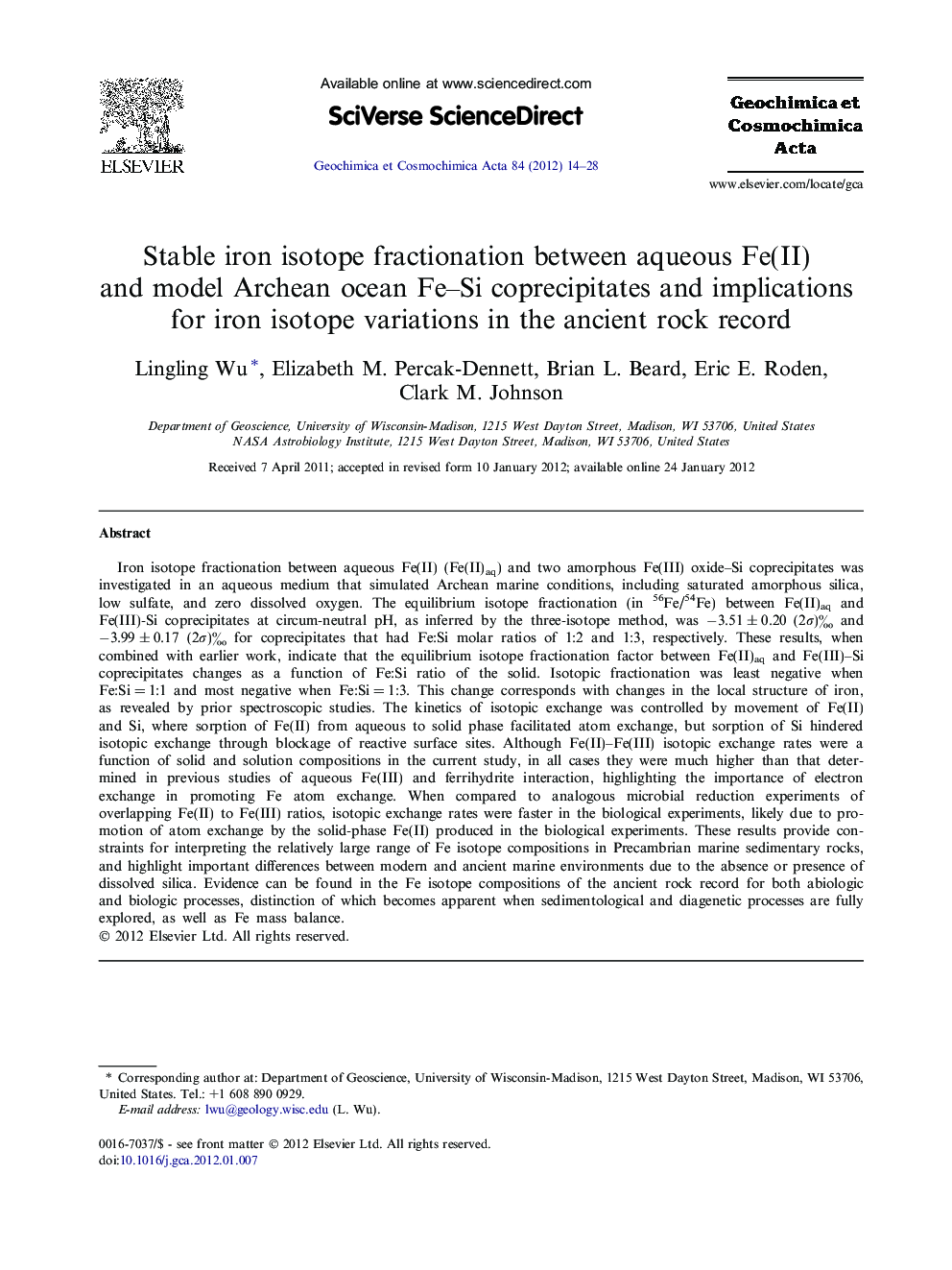| کد مقاله | کد نشریه | سال انتشار | مقاله انگلیسی | نسخه تمام متن |
|---|---|---|---|---|
| 4702931 | 1638073 | 2012 | 15 صفحه PDF | دانلود رایگان |

Iron isotope fractionation between aqueous Fe(II) (Fe(II)aq) and two amorphous Fe(III) oxide–Si coprecipitates was investigated in an aqueous medium that simulated Archean marine conditions, including saturated amorphous silica, low sulfate, and zero dissolved oxygen. The equilibrium isotope fractionation (in 56Fe/54Fe) between Fe(II)aq and Fe(III)-Si coprecipitates at circum-neutral pH, as inferred by the three-isotope method, was −3.51 ± 0.20 (2σ)‰ and −3.99 ± 0.17 (2σ)‰ for coprecipitates that had Fe:Si molar ratios of 1:2 and 1:3, respectively. These results, when combined with earlier work, indicate that the equilibrium isotope fractionation factor between Fe(II)aq and Fe(III)–Si coprecipitates changes as a function of Fe:Si ratio of the solid. Isotopic fractionation was least negative when Fe:Si = 1:1 and most negative when Fe:Si = 1:3. This change corresponds with changes in the local structure of iron, as revealed by prior spectroscopic studies. The kinetics of isotopic exchange was controlled by movement of Fe(II) and Si, where sorption of Fe(II) from aqueous to solid phase facilitated atom exchange, but sorption of Si hindered isotopic exchange through blockage of reactive surface sites. Although Fe(II)–Fe(III) isotopic exchange rates were a function of solid and solution compositions in the current study, in all cases they were much higher than that determined in previous studies of aqueous Fe(III) and ferrihydrite interaction, highlighting the importance of electron exchange in promoting Fe atom exchange. When compared to analogous microbial reduction experiments of overlapping Fe(II) to Fe(III) ratios, isotopic exchange rates were faster in the biological experiments, likely due to promotion of atom exchange by the solid-phase Fe(II) produced in the biological experiments. These results provide constraints for interpreting the relatively large range of Fe isotope compositions in Precambrian marine sedimentary rocks, and highlight important differences between modern and ancient marine environments due to the absence or presence of dissolved silica. Evidence can be found in the Fe isotope compositions of the ancient rock record for both abiologic and biologic processes, distinction of which becomes apparent when sedimentological and diagenetic processes are fully explored, as well as Fe mass balance.
Journal: Geochimica et Cosmochimica Acta - Volume 84, 1 May 2012, Pages 14–28